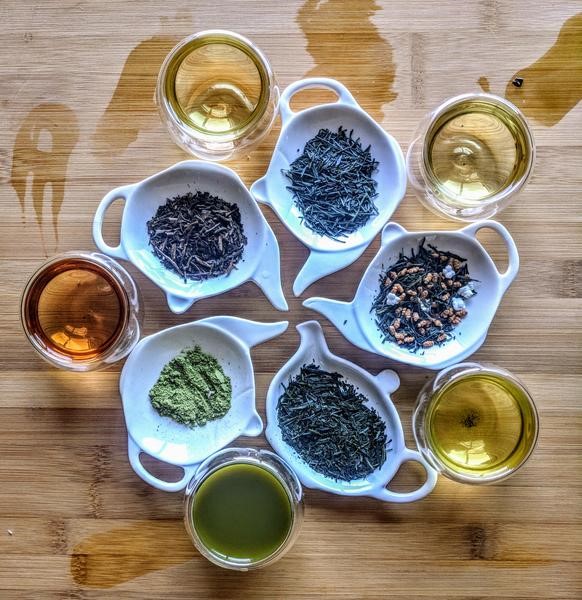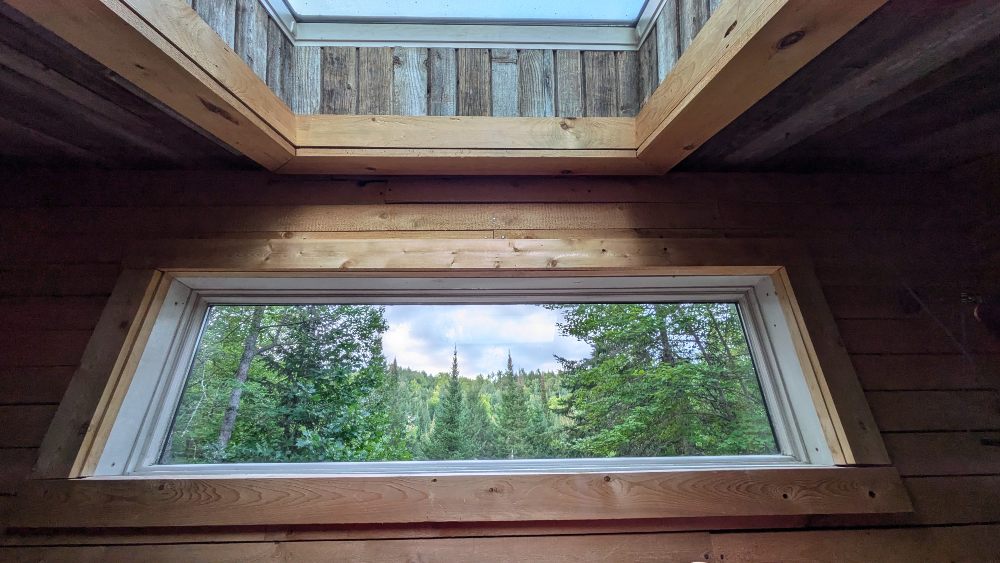
Regions of the World of Tea – Tea from Japan
Continuing with the second installment of the Academy of Tea, we’re looking at regions of the world, their role in the history, production and current tea industry. This week past week was on Japan. Below is a brief summary of Japan, it’s role in the history of tea, production of tea, it’s contributions to the world of tea and where it is currently in the tea industry today.

History
794-1195AD
Tea was introduced to Japan from China through Zen priests and Chinese Buddhist monks
Tea was called dancha, a brick like ball of oxidized tea leaves.
Saicho, Kukai (monks) returned to Japan from China. They served boiled tea cakes to the Emperor Saga, the first emperor to drink tea.
9th century
Relations between China and japan deteriorated
Relations between China and Japan deteriorated. Eventually diplomatic relations between the two countries was abolished. In Japan, all things Chinese were no longer in favour including tea!
12th century
Japan and Chinese relations started to improve.
1141-1215
Eisai Myoan was a Buddhist monk. He brought back tea seeds and introduced Chinese etiquette of tea presentation to Japan. He introduced tea drinking as an aid for monks trying to stay awake and alert during meditation; he introduced whipped tea; tea for medicinal and psycho-spiritual benefits. He also set a stage for the Japanese tea ceremony. Eisai Myoan wrote Kissa Yojoki, “The book of Tea”, the oldest tea book in Japan which advocates health benefits of tea. Monks started a daily ritual of having tea together which involved rules of preparing and serving tea. In time, tea and Zen spiritualism became inseparable.
13th century
Samurai warriors prepared and drank matcha as they adopted Zen Buddhism. Tea, matcha was a source of entertainment and excess.
1423-1502
Murato Shuko was a famous tea master, Zen teacher, father of Japanese tea ceremony and created the 4 ½ mat tatami tea room which was to represent ideals of simplicity and equality. Two concepts central to the Japanese tea ceremony are
- Wabi and
- Ichigo Ichie
Wabi refers to “Finding beauty in imperfection and discovering a sense of the profound in all things in nature.”
Ichigo Ichie means, “one time, one meeting”, every encounter we have in life is unique and will never repeat itself. You live a particular moment and then it is gone.
1522-1591
Sen Rikyu believed in the spiritual aspect of tea and was a strict practitioner of Wabi. He promoted Shuko’s belief in equality, e.g. tea huts were designed so everyone entered had to stoop.
The 7 rules of tea
- Make a delicious bowl of tea
- Lay out the wood charcoal to beat the water
- Arrange flowers as they are in the fields.
- In the summer, evoke coolness; in the winter, warmth.
- Anticipate the time for everything.
- Be prepared for rain.
- Show the greatest attention to each of your guests.
Japanese tea ceremony
The Japanese tea ceremony was developed as early as the 15th century. It is an expression of unified ideals of religion, harmony, simplicity, attention to beauty. There is “the way of tea” which consists of 12 precepts of conduct. It is a ritual based on Taoism (Daoism), which is influenced by Zen Buddhism and practiced in various temples.
16th century
Tea spread quickly across Japan in the 16th century. Matcha was prepared by skilled practitioners and served to a small group of guests in a tranquil setting.
Chanoyu means “hot water for tea”. It refers to a single ceremony or ritual.
Chaji or Chakai means “tea meeting”. It refers to a full tea ceremony with kaiseki, a light meal, usucha, thin tea and koicha, thick tea, and lasts about four hours.
17th century
In the 17th century an interest in chanoyu spread throughout Japan. As a result the need for rustic simple teaware for various styles of tea ceremonies became more prevalent. A new interest in ceramic pottery began. Kyushu for Sencha tea ceremonies, similar to Chinese tea ceremonies, but uses a high grade Japanese tea leaf.
Tea practitioners came to be more during the 17th century. A tea practitioner was someone that was knowledgeable about the following: production of tea; types of tea; kimonos; calligraphy; flower arranging; ceramics; incense. The mastery of the tea ceremony takes many years of study and many cases, a lifetime. Even the guest at a tea ceremony needs to know the gestures, phrases, proper way to take tea and sweets and general conduct expected in a tea room.
Tea cultivation in Japan
1192-1333 – Kamahura period
Eisai encouraged other monks to plant seeds in other parts of Japan spreading the tea plant. The first cultivation of the tea plant took place in Toganoo, Kyoto. The climate here was such that it nurtured excellent tea crops. Tea plants were then transplanted to Uji in the Yamashiro area, south of Kyoto. Tea plantations were slowly established throughout Japan, mostly in Kyushu.
Tea regions of Japan
- Kyoto (Uji)
- Fukuoka (Yame)
- Miyazaki
- Kagoshima
- Saitama (Sayama)
- Shizuoka
- Aichi (Nishio)
- Mie
Tea Production in Japan
Japan is made up of 3000 islands. Japan is along the Pacific coast of Asia, called the archipelago, from north to south. Some of the islands include Hokkaido Honshu, the main island, Shikoku and Kyushu, Ryukyu Islands including Okinawa. The steep elevations in Japan create a risk of landslides from earthquakes and soft ground. Consequently, 70% – 80% of the country is not suited for agriculture, industry or residence. The temperature and climate varies north to south. There is now in the north and it is quite tropical in the south. The land that is designated for tea production is used wisely and efficiently due to space constraints, climate conditions and harvesting methods.
How exactly is the land used wisely and efficiently? The tea gardens are arranged in hills in straight, manicured rows, designed for mechanical harvesting. Some hand plucking is done but limited and yields very expensive teas. E.g. Gyokuro, Jade Dew
Mechanized Garden harvesting
These tea gardens where mechanized garden harvesting is used are planted near major rivers and water sources. The yields from mechanized harvested tea gardens is 100-150kg/day, while hand plucked tea gardens yield 10-15kg/day. Efficient harvesting allows for a fourth harvest in the southern most regions.
Japanese green tea
The finished leaf of Japanese green teas are needle like in shape. This achieved by processing the leaves through rolling and drying machines. Almost all Japanese green tea is processed by steaming. There are a few pan friends green teas produced in Kyushu, a regional specialty. The quality of green ranges in price and quality. There are many specialty green teas. The best Japanese green teas are from the 1) Yame region of Fukuoka Prefecture in Kyushu and from 2) Uji region of Kyoto.
Hand Harvesting Techniques
Hand picked leaves are from the top of the shrubs. These leaves give a finer texture and procures higher grade teas. The more developed leaves are harder and result in a sandy texture and lower grade teas. A delicate flavour occurs when the plant sends all of its nutrients to the very young growing leaves. Younger leaves contain more chlorophyll which implies a greener more vibrant colour. More developed leaves are further down the plant. Here the chlorophyll converts gradually into tannin which implies a more bitter flavour and duller brown-green colour.
Shincha – first growth
This means “new tea”. This is the first plucking which occurs at the start of spring in early April – early May. The first bud growth has the highest polyphenol content. The leaf is bright green; there is a sweetness of flavour in the leaves. One fifth of the total tea production in Japan is done this way.
Types of Japanese Teas
- Sencha
- Fukamushicha
- Kukecha
- Konacha
- Bancha
- Matcha
- Gyokuro
- Hojicha
- Genmaicha
Aracha – crude green tea processing
Aracha means “crude tea”. It uses the entire leaf. After it is completed and dry the leaf is ready to be processed into final shiagecha, refined tea products. Aracha tea are shelf stable and stored at farms ready for further processing in factories.
There are 9 manufacturing steps of aracha
- Leaf plucking
- Tea steaming
- Primary roller/dryer
- Rotary tea roller
- Secondary roller/dryer
- Final tea roller/shaper
- Final dryer application ( can be pan fried)
- Sort and shape leaves and remove unwanted solids with refining machines
- Tea blending with or without additives and scenting.
Shiagecha – final tea processing
This is refining process that produces the final leaf style. The idea is to achieve a uniform leaf shape; remove dust, powder, stems, sticks and mature leaves; reduce the moisture content to make tea appropriate for consumer storage; balance flavours.
Summary of Japanese tea industry
Production has been declining from 20012 to 2014 but exports have been increasing and consumption/head in Japan has been decreasing. Export to the USA, Canada and other Asian countries have been increasing.
References:
- Tea 102, Academy of Tea, URL: https://academyoftea.org/tea102/
- History of Japan, japan-guide.com, URL: https://www.japan-guide.com/e/e641.html
- Japanese Tea – Tea History in Japan, valley of Tea, URL: https://www.valleyoftea.com/blogs/tea/japanese-tea-tea-history-in-japan
- 7 Rules of Chado, Japanese Tea Ceremony, URL: https://japanese-tea-time.weebly.com/rules-and-principles.html
- The Japanese Tea Ceremony, URL: http://japanese-tea-ceremony.net/
- Japan, Updated, Oct. 23, 2017, RateTea.com, URL: https://ratetea.com/region/japan/5/
- 28 Types of Japanese Teas, John Spacey, July 2015, Japan Talk, URL: https://www.japan-talk.com/jt/new/japanese-tea
- Everyone will love this hazelnut spread stuffed cookies recipe - November 18, 2024
- The Greely Good Market is a Modern Outdoor Market - September 3, 2024
- Our Quick Visit to the Petawawa Container Market - September 3, 2024






